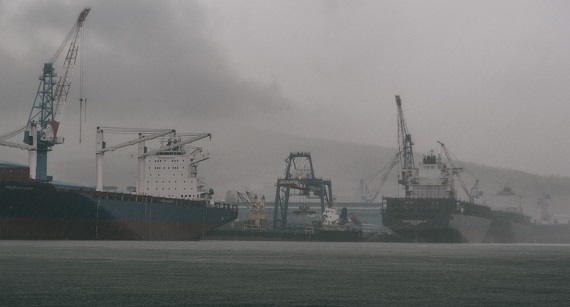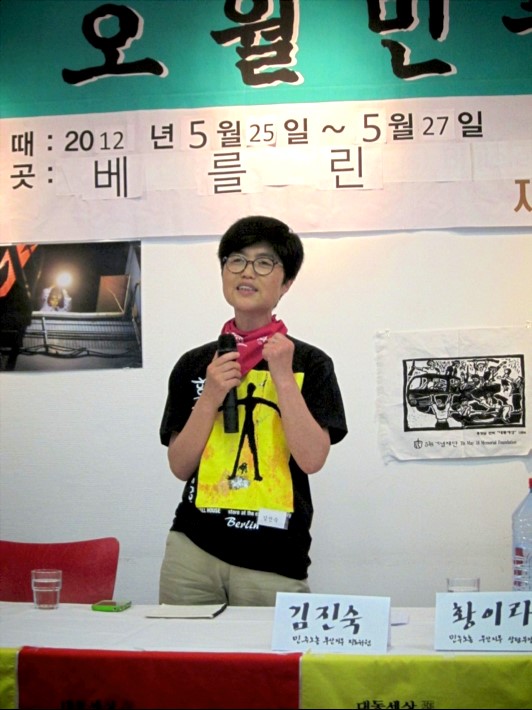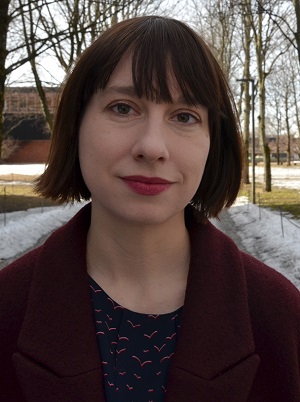
With her project, "(Dis-)Assembling the Life Cycle of Container Ships. Global Ethnographic explorations into Maritime Working Lives", associate professor Elisabeth Schober, and a group of postdoctoral research fellows will investigate these questions.
Schober is one of two young researchers based at University of Oslo’s Faculty of Social Sciences to receive coveted free research funding from The Norwegian Research Council (FRIPRO) in December of 2017. The competition for these funds is tough, and only the best researchers with exceptional projects and applications have a chance to win.
The human stories behind the ships
- The container ship is a significant icon of economic globalization. We want to tell the human stories behind containerships, from a labour angle. The many biographies behind these vessels will also help us understand better how globalization actually works, or on occasion fails to work, the researcher explains.
It is a challenge to decide where to put the analytical boundaries around such an expansive project, Schober admits. She therefore decided that for her own purposes it would be best to have one person focusing on shipbuilding, the second one on the shipping industry aspect, and one on ship-breaking , which means three main research participants working together over a three-year period, and conducting fieldwork in different parts of the world.
The woman on the crane
A labour struggle at a South Korean shipyard caught Elisabeth Schober’s attention six years ago. After she finished her PhD at Central European University, where she conducted research on the issue of US military bases in South Korea, she volunteered for the NGO “Korea Verband” in Berlin. During that time, a request for collaboration came in involving representatives from IG Metall, the largest metal union in Germany. They wanted to invite Kim Jin-sook, a labour activist from South Korea, who had earlier occupied a crane at a shipyard for nearly a year in protest of hundreds of workers being laid off. This was in 2011.

- In 2012, Kim came down from the crane and visited us in Berlin. This turned out to be such an interesting story, because through researching this case I found out that there was another shipyard in the Philippines, owned by the same company. This shipyard was ten times larger than the one where all these layoffs were happening, where some labour unrest was also taking place. I became interested in the tale of these two shipyards, and how they might connect. I was convinced that this was a story that an anthropologist might be able to tell well, because when you work in an NGO or a trade union, you have very little time and often very little money to explore an issue like that further. I was lucky enough to be offered a position as postdoctoral fellow, as part of Professor Thomas Hylland Eriksen’s project, Overheating, at the University of Oslo.
- Initially, I was not particularly interested in ships themselves, but was keen to work on crisis and globalization through the framework of Overheating. However, as I continued researching the shipbuilding sector, I got increasingly excited about container ships, as many of them were produced at Subic in the Philippines, where I ended up doing fieldwork for eight months.
Moving the world along
- This is a big industry with many players involved, Schober says. For example, in South Korea you have around 100 000 people working at shipyards, and the industry has played a central role in building up the economy in the country.
South Korea was a rather poor country only three generations ago, Schober explains. They then invested in shipbuilding. She mentions a book called “Building ships, building the nation” that details aspects of this period from a labour perspective. It also focuses on that particular shipyard that Schöber was interested in, in Pusan.
- This new project on container ships is an attempt to keep an eye on the bigger picture, while at the same time paying close attention to individual lives and local concerns, using both comparison and long-time fieldwork. The newest container ships, the ultra large ones, are truly enormous. 20 000 containers can fit in one ship, and it is easy to be in awe of these objects, when you consider their role in keeping the contemporary world spinning. We will, however, look behind the scenes, and also look at complications and stoppages that make it more difficult for these ships to move along their lifecycle.
Elisabeth Schober and her research-team will also pay keen attention to the struggles of the people working in these industries. With very diverse sets of workers and clients involved in all three maritime industries, communication is one obvious challenge, and so are often dire working conditions. In addition, there are the economic challenges stemming from extensive outsourcing, offshoring and subcontracting taking place.
The tear of Malmö
Geographical shifts are also exemplified by a story the researcher just read up on - the “Tear of Malmö”, which is a famous crane in use at a shipyard in Ulsan, South Korea. Many South-Koreans have heard about it, Schober says. As the name indicates, this crane was first placed at a shipyard in Malmö in Sweden, but the particular facility went bankrupt, and they had to sell off their infrastructure quickly. This crane was, after a detour via a Danish company, then sold to a Korean shipyard for a very small amount of money.
- The story is popular in South Korea that the residents of Malmö were so saddened by their crane being shipped away that they cried their hearts out. Hence the name “Tear of Malmö”. The crane was then shipped off to Ulsan, South Korea, to be re-constructed at the site of the world’s largest shipyard.
These days, the Korean shipbuilding industry is under a lot of pressure because China and other countries in Southeast Asia, like the Philippines, can produce ships at a cheaper cost, Schober explains. Last year, in the middle of a series of state-led restructuration attempts, the story about the crane was dug up again, when the then-President of Korea stated that the ship workers should watch out so that the tear of Malmö would not become the tear of Ulsan.
From Scandinavia to Asia
- This example summarizes the kinds of stories I want to tell with this project. I am interested in these large-scale movements of the industry, and how it effects workers in different locations.

There will also be up to three Master’s students working on maritime issues in Norway attached to the project. Schober is interested in finding out how the remaining maritime industries here, like shipping and shipbuilding, have adapted to global developments over the last 30 to 40 years. Some of the largest players in the shipping industry are still placed in Europe, and particularly Scandinavia, Schober explains, so Europeans figure centrally as the main clients who order ships in Korea, for instance.
Transnational project
- Later on I would like to do fieldwork in Geoje, an island in South Korea. Two of the largest shipyards in the world are placed here, and most of the clients are from Northern Europe. Quite a few employees of these Europe-based corporations travel to Korea to oversee parts of the process, so you have a significant expat community on this island, who largely hails from Scandinavia, Northern Europe and the USA. The building of a ship is a very transnational process; there are many people flying around the world in order to see it through.
People employed to actually work on board of the ships, however, today often hail from the Global South. The largest population of seafarers these days come from the Philippines, she continues, because they are willing to work for the least money.
- Container ships have small crews, even on very large vessels there are often only 20 to 30 people onboard, and these are highly international teams. The captains are often still from Europe, but the crews are hired from all over the world, depending on the wage they are willing to work for. Norwegian sailors have increasingly become a rarity.
Dangerous jobs
When the life journey of a ship comes to an end, it needs to be taken apart. And ship breaking is considered the most dangerous job in the world, Schober says:
- A part of the problem is that in India, Bangladesh or Pakistan, where these industries are located, due to a lack of safety regulations at work, the workers often do not have access to the knowledge of how these ships were put together in the first place.
When a welder tries to cut a piece off, Schober elaborates, he may not be sure what his blow torch will actually hit, as he does not have enough information about the structure of the ship available to him. This can create very dangerous situations. There are therefore increasing efforts, also by labour unions, to make people from these different sectors of shipbuilding and ship breaking talk to each other, to make the different processes involved in the life-cycle safer, she says.
Happy to be in Oslo
- With the new financial help I received, I will finally be able to finish my book about the massive changes in the shipbuilding industry in South Korea, and also zoom out and look into how it has put pressure on labour both at home, and increasingly also in other countries, in order to stay competitive with China.
Another goal for the young researcher is a book about the containership itself, where she, in collaboration with the postdoctoral fellows, will trace the connections and disconnections between these different maritime industries.
- I am also interested in creating an audience outside of academia for this project, she states.
Schober, an Austrian national, had heard about Thomas Hylland Eriksen’s work while a student in Central Europe, but she had never visited Oslo before she got a postdoc position here.
- I am very glad I chose to come to University of Oslo, as I suspect it is hard to find better working conditions for anthropologists elsewhere in the world these days. We get massive support here, and Norway is a country that provides a lot of space to anthropologists outside of academia, too. I’m very excited to collaborate with many gifted scholars interested in maritime issues, from both Norway and elsewhere, over the next few years.